This Refillable 'Palette' Makes It Easy to Travel With Toiletries and Cosmetics
Best of all, it eliminates tiny single-use plastic containers.
Katherine Martinko is an expert in sustainable living. She holds a degree in English Literature and History from the University of Toronto.
:max_bytes(150000):strip_icc():format(webp)/Katherine-Martinko-bw-ae5224ea084d4d9c8acb22e51074339f.jpg)
- University of Toronto
:max_bytes(150000):strip_icc():format(webp)/HaleyMast-2035b42e12d14d4abd433e014e63276c.jpg)
- Harvard University Extension School
- Environment
- Business & Policy
- Home & Design
- Current Events
- Treehugger Voices
- News Archive
Packing for any trip becomes a whole lot easier when you have the proper suitcase, bag, packing cube, or container in which to put your belongings. This rule extends to skincare products and cosmetics as well, and yet this category of items has long been neglected when it comes to clever packing solutions .
For years people have made do with buying pre-filled travel-size containers and tossing them at the end of a trip, but this is hardly a sustainable option. Meanwhile, refillable containers are often too flimsy. I've used old contact lens cases and tea sample tins, but the cases cannot be cleaned easily and the tins are not leakproof. So you can imagine my happiness to learn about Palette's The Original High Fiver , an innovative reusable carrier "for all your goops, glops, and glam."
It measures 7.5 inches by 1 inch (about the length of a pencil) and has five little wells with screw-top lids, each of which holds .17 ounces of product. You can fill these wells with liquids, creams, and powders, and as you use them, you push up the soft flexible bottoms for easier access. The Palette is hand-washable and made in the United States.
At this point, the Palette is made from a minimum of 30% recycled plastic. The next version is expected to have 50% recycled content, with a long-term goal of 100%. The company is open to suggestions for getting there. "If you have a consistent source of non-toxic recycled plastic or have advice, assistance or new technology we should consider, please contact us," the website says.
Palette was invented by lawyer and mother Kate Westad the night before a solo trip to Paris, as she was struggling to figure out how to transport her favorite beauty, cosmetic, and toiletry products across the ocean. Palette launched in August 2019 and received an "overwhelmingly positive" response from travelers.
Westad told Treehugger that the company is on a mission to eliminate disposable minis and travel-sized products, an industry worth more than $1 billion. "People use a refillable water bottle, they use a refillable coffee cup, they buy Stasher bags instead of single-use ziptop plastic bags – so why not think of using innovative refillables in your beauty and personal care routine?"
She went on to explain that most people don't realize that tiny plastics don't get recycled because of their small size:
"That means every beauty sample, every 'oh-so-cute' mini set of skincare products, those tiny toothpaste tubes and mini shampoo bottles and and, yes, all those travel-size bottles at the hotels you visit go straight to the landfill. It is already a concern that full-size products are not getting recycled; these tiny plastics don’t even stand a chance. When I figured this out in the development of our product, let’s just say I freaked out thinking of my own personal-sized mini mountain I had 'wish-cycled' and inadvertently sent to the landfill over the years."
Using Palette saves money because you don't pay the premium for special-sized packaging; instead, you get to take exactly what you love wherever you go. There's no frantic rummaging through overfilled bags to find what you need because it's all in one place, and it's as well-suited to short day trips as it is to overseas journeys.
"By using a beauty reusable like the High Fiver, you are not only eliminating waste but supporting purpose-driven brands who innovate conscious products and embody the reduce, reuse, recycle ethos," Westad continued. "For example, we use recycled plastic and recycled paper trash in our packaging and shipping envelopes, along with a tight footprint and efforts toward sustainable shipping."
Find out more at Palette . The Original High Fiver retails for $39.
- A Tour of My Zero Waste Kitchen
- A Beginner's Guide to Plastic-Free Living
- On Creating a Zero Waste Beauty Routine
- 6 Cosmetics Companies With Refillable Packaging
- 5 Easy Tips to Make Travel More Sustainable
- 8 Makeup Brands That Are Fighting Plastic Packaging
- 13 Zero Waste Beauty Essentials
- It's Time to Fight the Beauty Industry's Waste Epidemic
- 7 Items for Zero Waste Travel
- 3 Products You Didn't Know You Could Buy Plastic-Free
- 10 Ways to Be an Eco-Conscious Tourist
- How to Choose Clean and Green Cosmetics
- Who Needs Toothpaste Tubes When You Can Use Plastic-Free Tablets?
- Shampoo Powder Is a Hot New Trend in Eco-Friendly Hair Care
- Best of Green Awards 2021: Green Beauty and Personal Care
- How to Be a Sustainable Traveler: 18 Tips
CONFIDENCE, COMMUNITY, AND JOY
- Skincare Ingredients A-Z
- Skin Concerns
- Hair Removal
- Moisturizers
- Tools and Techniques
- Hair Concerns
- Hair Styling
- Fashion Trends
- What to Wear
- Accessories
- Clothing and Apparel
- Celebrities
- Product and Brand News
- Trends and Innovation
- Amazon Picks
- Gift Guides
- Product Reviews
- Mental Health and Mood
- The Byrdie Team
- Editorial Guidelines
- Editorial Policy
- Terms of Use and Policies
- Privacy Policy

How to Travel with Makeup and Skincare: 12 Dos and Don'ts
:max_bytes(150000):strip_icc():format(webp)/allie-headshot-AllieFlinn-1f4cab6e78c6418582ffa2a11b3054f1.jpg)
@calpak / Instagram
Preparing your makeup for traveling is not an endeavor to be taken lightly. After all, with TSA regulations and baggage handlers who don't care that you have a fragile, limited-edition makeup palette in your suitcase, it's a rather harrowing experience for your beauty products. Okay, so we're being slightly hyperbolic. Packing a travel makeup bag isn't exactly a quest on par with throwing the One Ring into the fires of Mount Doom, but it can be tricky. Should you pack that eyeshadow you've never worn before but could suddenly be struck with a need for? What's the best way to travel with a liquid foundation? And seriously, when will we learn how to pack makeup for a flight?
To answer these questions (and more), we turned to celebrity makeup artists Mary Irwin, Gabriel De Santino, and Jamie Greenberg.
Meet the Expert
- Mary Irwin is a celebrity makeup artist based in New York City and the co-founder of The Makeup Standard .
- Gabriel De Santino is a makeup artist and founder of Gabriel Cosmetics .
- Jamie Greenberg is a Los Angeles-based celebrity makeup artist.
Invest in a Padded Makeup Bag
According to Irwin, investing in a padded makeup bag like the Away Large Toiletry Bag ($75), which will help keep all of your precious products safe. Also, when packing your carry-on, she says to put the makeup bag in the middle of your case and surround it with soft items (like clothing). "This assures that it's well-padded and you won't arrive with an explosion of eyeshadow," she says.
Greenberg concurs, saying a padded bag "will protect all of your palettes, lipsticks and other delicate (and often expensive) makeup products, so they don’t break while in transit."
Save Space By Packing Palettes
" When traveling, pack palettes [versus single eyeshadow pans] to save space and give you options for both day and night looks," says Irwin. Sigma Beauty's Ritzy Eyeshadow Palette ($25) hits all the notes—a mix of mattes, shimmers, and metallics allows you to build multiple looks without taking up a ton of space in your bag. And, if you're a frequent traveler, peep the brand's On-The-Go Eyeshadow Palette Set ($87), which contains every color you could possibly need (because let's be real, we need options).
Customize With Magnetic Palettes
Traveling with palettes only makes sense if you know you're going to be using all of the shades. If you'd rather pick and choose which shades to travel with, Irwin suggests using a magnetic palette that you can customize yourself. Try The Pro Palette ($25)—you can build and refill with the exact pans you'd like (translation: you won't be stuck with colors you won't use).
Always Pack Travel-Sized Products in a Carry-On
De Santino has some sound advice when it comes to packing your liquids: Always use a carry-on. "I always like to keep my makeup and skincare in my carry-on, so I stick to solids and travel sizes for all liquids. You'll be able to retouch before you de-board the plane, and worst-case scenario, if your luggage gets lost, at least you'll still be able to wash your face and throw some makeup on to feel a little better," he says.
Irwin agrees, adding that makeup products are delicate and baggage handlers tend to want to make a 50-yard pass with your suitcase. "Protect your makeup investment and make sure it gets there with you," she says.
Pack Multipurpose Products
"I like to use traveling as an excuse to streamline and stick to crossover products, like my Multi-Pots and Gabriel Cream Highlighter ($21), which can be used on eyes, cheeks, and lips," he says. Packing products that don't require the use of brushes is also a good idea not only for space purposes, but this will also preserve the life of your brushes, as being cramped up in travel bags is not ideal.
Pre-Plan Your Makeup Looks
That baby blue liquid liner you've been meaning to test for the last year? It likely has no space in your travel makeup bag. Before you pack, De Santino suggests actually planning out your looks and assess what actually needs to come with you. That being said, this doesn't mean you can't have fun with your makeup looks while abroad. For example, if you know feathery brows are on the horizon, be smart about your picks: a pack a dual-sided brow product like Kevyn Aucoin True Feather Brow Marker Gel Duo ($32), which will set your brows in place on no-makeup makeup days and help you achieve the fluffy brow trend on more adventurous days.
Use Refillable Travel Containers
If you'd rather remain loyal to your beauty products (versus going with the unknown at a hotel), investing in leak-proof travel containers is a safe bet. There's nothing this one from Palette by Pak ($39) can't store—from liquids and oils to creams and even your face powder, this five-piece container lets you bring your favorites on the go.
DIY Your Travel Containers With a Contact Lens Case
Rather DIY it? De Santino says to put your lotions, serums, and any other liquids, like foundation, into a contact lens cases. "They look tiny but can hold a surprisingly large amount of product and seal up really well, so you don't have to worry about spills in your bag," he says.
Protect Your Powder Compacts With a Cotton Pad
"If traveling with powder compacts, ensure they arrive intact by placing a cotton pad (or, if you still have the puff that came with it) inside and pack on the top of your makeup bag. Pad the top of your bag with additional cotton pad for extra cushion," De Santino says.
Preserve Your Looks With a Makeup Refresher Spray
Travel schedules are busy and sometimes hectic, so it's helpful to have something on hand to refresh your makeup when you're running from A to B. Too Faced's Travel Size Hangover 3-in-1 Replenishing Primer & Setting Spray ($18) spray hydrates and brightens both bare skin and foundation whenever the jet lag kicks in, as well as sets makeup to keep it in place, no matter what's on your itinerary. (Not to mention, it's the perfect pick-me-up on the airplane.)
Invest in Multi-Purpose Products
"Multitasking products are my absolute favorite for traveling," says Greenberg. "Ultimately, you’ll have less to pack and more room for other essentials, or souvenirs to bring home from your travels." Greenberg recommends a combination tinted moisturizer-SPF product like Younique's BARE·YOU BB Tinted Moisturizer+ SPF 30 ($46). "It's perfect for when you are on the go. Your skin is protected with a SPF 30 mineral zinc sunscreen, plus it is tinted, so it gives a more even-toned appearance," she says. "I also love it because the formula adds an added boost of moisture, with ceramides that hydrate skin and reduce trans-epidermal water loss."
Categorize Your Products
One surefire way to cut back on the number of products you pack (and therefore keep the essentials safe while in transit)? Pack in categories. "Separate your makeup by skin, face, eyes, lips," Greenberg says. "Then try to reduce one product per category, to help save space."
Related Stories
14 Best Makeup Bags to Keep Your Beauty Stash Organized
The Best Travel Jewelry Cases Byrdie Editors Never Pack Without
Carry-On Approved Makeup and Skincare for Your Next Trip
A Neutral Eyeshadow Palette is a Makeup Bag Staple—These 12 Are The Best Out There
The 15 Best Cream Contour Palettes for Subtle Definition
These Are the Best Makeup Products of 2023
The 24 Best Work Bags That Will Make You Look Chic and Professional
The 60 Best Skincare Gifts, According to Team Byrdie
The 67 Best Beauty Gifts of the Season, According to Team Byrdie
76 Gifts for Teens to Make You Popular with Gen-Z
Pack The Perfect Carry-On With MeUndies Assortment of Underwear and Loungewear
24 Travel Beauty Products Byrdie Editors Always Pack
10 Makeup Artist-Approved Kohl Eyeliners For Sultry, Smokey Eyes That Last
20 Affordable Drugstore Eyeshadow Palettes That Could Pass as High-End, According to Makeup Artists
17 Black-Owned Travel Essentials to Take on Your Next Vacation
The 15 Best Contour Kits for Effortless Sculpting

5 Best Makeup Palettes for Travel
TOILETRIES , Travel Makeup
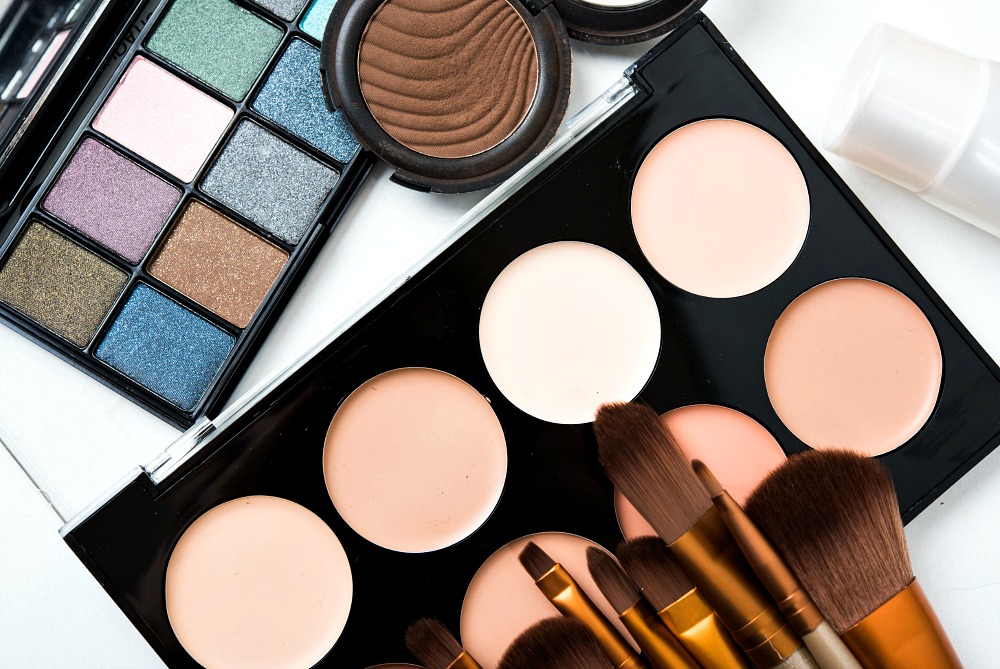
Support TFG by using the links in our articles to shop. We receive a small commission (at no extra cost to you) so we can continue to create helpful free content. We earn from qualifying purchases made to the featured retailers. Thank you, we appreciate your support!
Packing your makeup bag for that big trip just got easier with these multitasking face kits. Pack light with the best makeup palettes for travel!
Best Makeup Palettes for Travel
Table of contents.
If you’re like me, you want to pack light when you travel. But you don’t want to give up your beauty routine, right?
The answer to looking good on the go is in a travel makeup palette. A travel makeup set can include eye shadow, blush, lip tint, and more!
These travel size makeup kits might be small, but they pack in a lot! See our recommendations for the best makeup travel kits!
What are The Best Makeup Palettes

NYX Go-To Makeup Palette
Best Face Palette: NYX
This lightweight and compact face kit is housed in a sleek case with a handy mirror and has been designed to create a matte and natural glow on the go.
Create vibrant eye looks with the bronze and pink shades and warm up your complexion with the shimmering coral or taupe cheek color and bronzer. This travel makeup kit is perfect for warm, coastal destinations but also city breaks!
Shop more NYX palettes: Amazon | NYX
Check out our tips for packing travel makeup !

LORAC LA Experience Travel Palette
Best Travel Eyeshadow Palette: LORAC
LA Experience is LORAC’s travel-friendly palette inspired by its coveted Pro palettes, with a few added extras to ensure makeup application on the go is easily done. All you need to add is your favorite foundation, mascara, and lipstick, and you’re set.
You can use the eyeshadows wet or dry to create a variety of different looks, and you can double up their uses. Try the “Farmers Market”’ eyeshadow shade as a base eyeshadow shade as well as brow bone highlight, and the “Twilight Tide” eyeshadow shade could be layered over for a soft, romantic look.
Shop more Lorac palettes: Amazon | ULTA
Read our foolproof guide to music festival makeup (that’s perfect for travel)!

Jane Iredale Pure & Simple Makeup Travel Kit
Best Travel Makeup Palette: Jane Iredale
The eyeshadows in these palettes are always buttery, pigmented and versatile, blushes are soft and flattering across a variety of skin tones, and its PurePressed Bare Mineral foundation is gentle on the face.
I have a soft spot for Jane Iredale’s face kits , given I pack my own every time I travel. The inclusion of the lip and cheek stain means you’re able to target both areas with the ease of just one product. This gets TFG’s top marks as one of the best travel makeup kits available!
Shop more Jane Iredale palettes: Amazon | Nordstrom | ULTA
These are the beauty products to buy when traveling to Europe!

Clinique All In One Colour Palette
Best Full Face Makeup Palette: Clinique
Clinique offers one of the best makeup palettes for the most dedicated beauty maven on the move. This sleek all-in-one makeup compact contains everything you need to create any desired look.
Including four eyeshadow quads, five lipsticks, two powdered blushes, and a mini mascara, this kit combines the bulk of your travel makeup kit essentials in one compact package.
Shop more Clinique Palettes: Amazon | Nordstrom
Learn to Pack Light Stylishly with my e-book!

Maybelline Travel Makeup Palette
Best All in One Makeup Palette : Maybelline
The beauty of this kit is its versatility, with the ability to easily transition your makeup from a soft day look to a smokey night look.
This gorgeous palette from Maybelline packs a lot of punch into one compact. You’ll find a range of warm, shimmry tones, from pearly metallic to matte shadows, glowing bronzer, and a classic red lip for the night.
And the cost is reasonable, so you can look a luxurious globetrotter without the high price tag!
Shop more Maybelline palettes: Amazon | ULTA
Discover French beauty secrets !
Comparison Chart of Best Travel Palettes
How to pack a makeup travel kit.
Only pack what you think you really will need and use. Use our suggestion to downsize your beauty products into smaller containers.
When it comes time to pack your makeup, you’ll want to consider a makeup bag to keep it separate and neat in your luggage. Consider a small cosmetic bag that can fit easily into your toiletry bag.
We recommend a toiletry bag that will hold all of your necessities and keep you organized. Some travel toiletry bags can hang in your accommodation, for extra convenience.
Get our free toiletries packing list here!
You also can wrap your makeup bag in clothing and add to your packing cube in your suitcase for further protection. Even if you travel carry-on only, your bag may be put into an overhead bin, under a seat, or hauled up flights of stairs. You don’t want to break your products.
However, if something does happen to your makeup or beauty supplies, if you forget something, or if you need something, you can buy products at your destination.
Get Travel Makeup Advice
What’s your beauty travel question? We have the answer! Our Travel Beauty articles include information about hair care and styling, skin care, toiletries, and, of course, makeup. From reader favorites and tips, to product reviews and suggestions, you’ll find everything you need to know about all things related to travel beauty!
Our Travel Fashion Girl Facebook Group members are happy to give advice, too! Be sure to request to be part of this supportive female travel group!
What is your favorite makeup palette for travel? Let us know in the comments!
For more travel-friendly beauty suggestions, please see:
- Pack Lighter with A Capsule Makeup Set
- Best Makeup Remover for Travel
- How to Pack Makeup for Travel
LIKED THIS POST? PIN THIS PIC TO SAVE IT!

I hope you enjoyed this post on the best makeup palettes for travel. Please share it with your friends on Facebook, Twitter, and Pinterest. Thanks for reading!
12 comments.
Hi, my favorite makeup for travel or everyday. Is Christina cosmetics color pallette number one. It is a powder base makeup pallete that can be applied in under a minute with 4 shades that can be used individually for blush or eyeshadow. Or applied together as a total face, natural looking finish. Having oily skin like mine, these compacts are perfect.
Thank you for sharing your recommendation wit us!
A fantastic brand where you can truly creat a pallet of what you exactly need is by sustainable brand Elate Beauty in Canada. Definitely worth checking out.
Thanks for sharing your recommendation with us Melanie!
I love the Lancome one.
Hi Meeh, thank you for sharing! Happy travels! ?
What is the palette featured in the main picture for this blog post, the one with ten (?) colors including blue, lavender, grey, etc.? I use an Eagle Creek Specter quarter-cube for makeup. I fill it with stick foundation, travel-size powder, 2 blushes, 2 eye palettes, and brushes corralled in a snack-size ziplock. After flying I transfer mascara, concealer, and primer into the cube.
Hi Dianne, I am afraid that the image at the top of the article is a stock image so I am not sure of the brand. Here are some makeup palettes which are similar to the one in the image: https://amzn.to/2Ug8MyS and https://amzn.to/2UvG5x9 . Sorry I could not have been of more help. 🙁
I have an Estee Lauder one I bought from Schiphol airport. comes with kohl eyeliner, mascara, 4 eyeshadows (a nude palette with shimmer shades as well as matte shades), lipsticks (in 4 colours you’d actually wear ranging from peach to red), face powder (with a little plastic hinged lid) and you can take the palettes out of the case – and a mirror. I use it for my regular makeup routine, super easy!
I LOVE The palettes you find in airports- AWESOME recommendation!
My favourite is from Jane Iredale make up and is a little starter kit. You can get it in light, ledium or dark and it includes: PurePressed Base, PurePressed Blush, 3 shades of PurePressed Eye Shadow, Circle\Delete Concealer, PureMoist Lipstick, PureGloss Lip Gloss, Blush Brush and Dual Ended Eye Brush. Everything you need except mascara and eyeliner all in one! And good for your skin too.
Sounds great! Thanks for sharing 🙂
Submit a Comment Cancel reply
Your email address will not be published. Required fields are marked *
Save my name, email, and website in this browser for the next time I comment.

- Privacy Policy
Travelers Plans How to Travelers Plans in The World
Palette travel container.
If you are a frequent traveler, you know how important it is to have the right travel accessories. One of the most essential items that you need to have in your travel kit is a palette travel container. This container is designed to keep your makeup, skincare products, and other cosmetic items organized and safe during your travels.
What is a Palette Travel Container?
A palette travel container is a compact and lightweight container that is specifically designed to hold and protect your makeup, skincare products, and other cosmetic items while you are on the move. It usually comes with multiple compartments, dividers, and trays that help you organize your products in a neat and tidy manner. The container is typically made of high-quality and durable material that can withstand the wear and tear of travel.
Why Do You Need a Palette Travel Container?
Here are some of the reasons why you need a palette travel container for your next trip:
Organize Your Products
A palette travel container helps you organize your makeup, skincare products, and other cosmetic items in a neat and tidy manner. You can separate your products based on their types, such as lipsticks, eyeliners, foundations, etc. This not only saves space in your luggage but also makes it easier for you to find what you need when you need it.
Protect Your Products
When you are traveling, your cosmetic items are exposed to various external factors such as moisture, heat, and pressure. A palette travel container provides an extra layer of protection to your products and keeps them safe from any damage or spillage. This ensures that your products remain in good condition throughout your journey.
A palette travel container is designed to be compact and lightweight. It takes up minimal space in your luggage and allows you to carry all your essential cosmetic items in one container. This saves you from the hassle of carrying multiple bulky containers.
How to Choose the Right Palette Travel Container?
Here are some factors that you should consider when choosing the right palette travel container:
Size and Capacity
You should choose a palette travel container that is of the right size and capacity based on your needs. If you are carrying only a few products, a smaller container would suffice. However, if you are carrying more products, you should opt for a larger container.
Make sure that the palette travel container you choose is made of high-quality and durable material. The material should be able to withstand the wear and tear of travel and protect your products from any external factors.
Compartments and Trays
Choose a palette travel container that has multiple compartments, dividers, and trays that help you organize your products in a neat and tidy manner. This makes it easier for you to find what you need when you need it.
A palette travel container is an essential item for any frequent traveler who wants to keep their makeup, skincare products, and other cosmetic items organized and safe during their travels. When choosing the right palette travel container, make sure to consider factors such as size and capacity, material, and compartments and trays. With the right palette travel container, you can travel in style while keeping your cosmetic items safe and secure.
1. Can I carry a palette travel container in my hand luggage?
Yes, a palette travel container is allowed in your hand luggage as long as it is within the size and weight limits set by the airline.
2. Can I use a palette travel container for non-cosmetic items?
Yes, you can use a palette travel container to organize and store other small items such as jewelry, stationery, etc.
3. Do all palette travel containers come with compartments and trays?
No, not all palette travel containers have compartments and trays. Some containers may have only one or two compartments.
4. How do I clean my palette travel container?
You can clean your palette travel container with a damp cloth and mild soap. Make sure to dry it thoroughly before using it again.
5. Can I buy a palette travel container online?
Yes, you can buy a palette travel container online from various e-commerce websites.

This section doesn’t currently include any content. Add content to this section using the sidebar.
Add description and links to your promotion
Your headline
Image caption appears here
Your product's name
Add your deal, information or promotional text

Designed to fit in the world.

Designed with our innovative individualized press-up wells and leak resistant system, you can bring your products wherever you go.
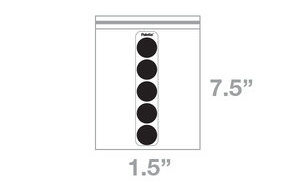
The Original High Fiver is sized perfectly for travel and of course slides right through TSA.

We made this to fit your life… and your finger. Soft, pliable bottoms mean every drop, glop and pop gets used. The grippy bottom keeps it where you put it.

RINSE, REPEAT
Designed to be washed with a mild gentle soap or detergent and hand-dried so it can easily be reused and reused over and over again. We’re working on testing our product as dishwasher safe. Stay tuned.
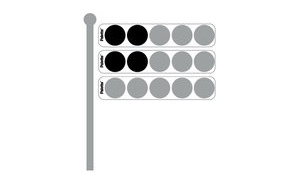
100% USA MADE
We keep our carbon footprint tight. From packaging to the product, the Original High-Fiver is entirely made in the USA. This manufacturing philosophy guarantees high quality and keeps us in the know when sourcing materials.
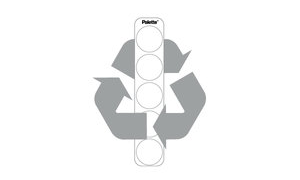
We are passionate about reusing plastics and materials! We work to use recycled plastic in our product. Due to availability, supply, and ensuring non-toxic and consistent-as-possible materials, your Palette™ The Original High Fiver may include anywhere from 30+% of recycled plastic in the white base. Learn more about our manufacturing process >>
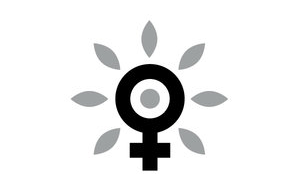
FEMALE FOUNDED
By supporting us, you are supporting a female-founded company trying to make the world a better place one product at a time.

PACKED WISELY
From our mailers to our packaging we keep it eco-friendly. Soy inks, FSC Forest Friendly Certified and 100% Post Consumer Waste.

TRAVEL RESPONSIBLY
Set your sights on sustainability. Ditch single-use travel-sized products and use what you love, over and over again while taking single-use plastics out of the waste stream.
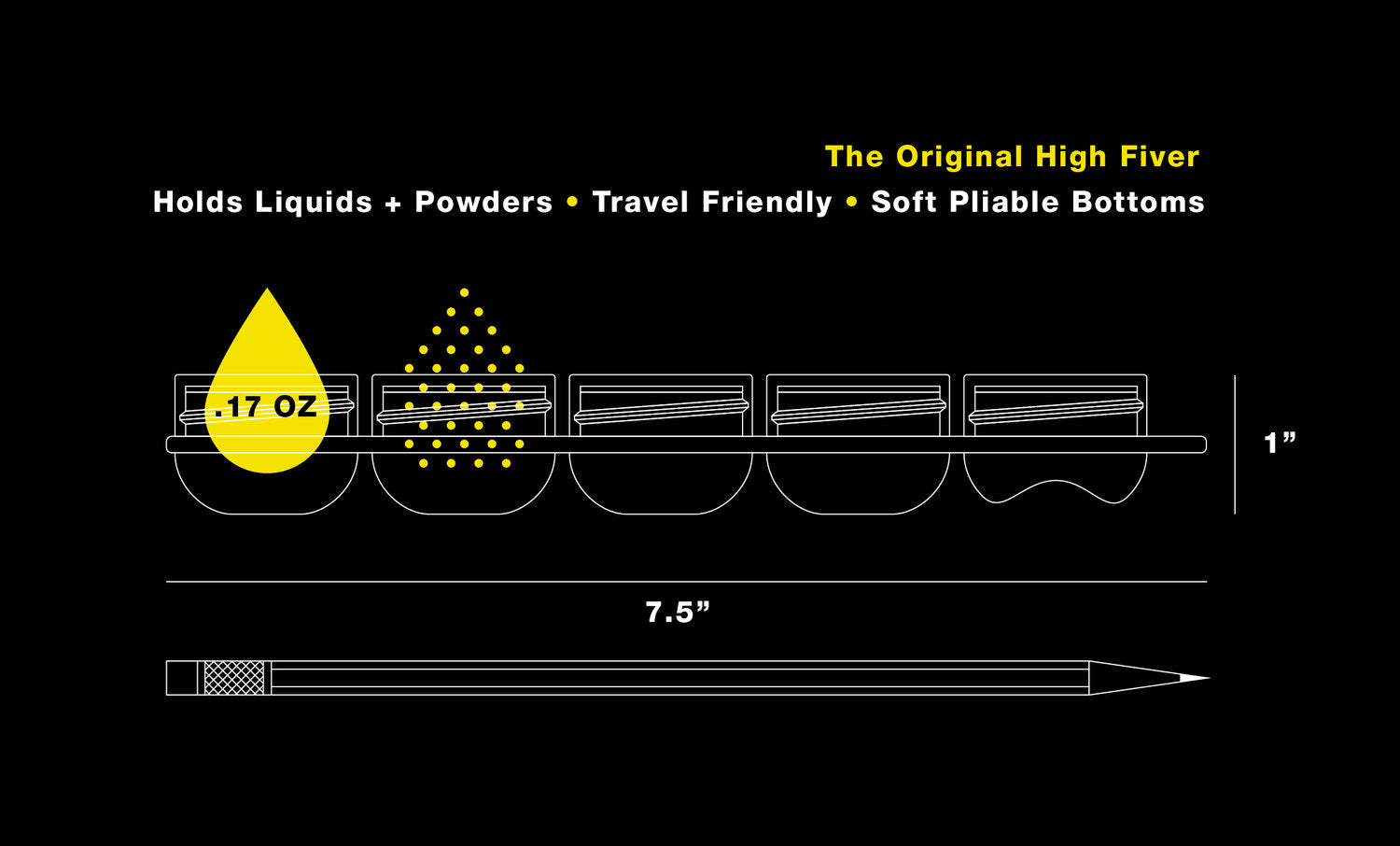
Living the custom life.
You love options. We’ve got options. You take your products and easily turn them into an instant, organized, customizable on-the-go travel tool.
Going to beach? Fill it with your fun in the sun favs. Going to Vegas? Grab the primer and glitter. Guys weekend? Aftershave and hair styling cream please.

Everyone needs a Palette.
Literally, if you have a face and you leave the house, The Original High Fiver Palette is for you. Whether you have a beauty routine that involves double cleansing, exfoliators, serums, toners and multiple day to night creams or you are minimalist with just a few constant favs, everyone needs The Original High Fiver. It's gender neutral, great for guys and gals and is the perfect thing to grab anytime you need a home away from home. Palette also makes the perfect gift.
Use what you love x 5.
No more using products on the go that you don't really like. No one likes searching for that sample or trial size of their fav products, or looking through the whole bathroom for a container to hodge-podge a way to shove them in a bag. It's time to live on the road, in the sky, and in far away places just like you do at home. Palette™️The Original High Fiver lets you use what you love and take your favorites without sacrifice.


When you purchase through links on our site, we may earn an affiliate commission. Details here .
22 Best Travel Eyeshadow Palettes

Bringing your entire makeup bag with you on a trip is like packing clothes you haven’t worn since you bought them…just in case. We’ve all done it, but it really doesn’t make any sense! As seasoned travelers, we’ve learned that it’s better to simply bring what you know you’ll wear—your tried-and-true favorites. Whether your makeup skills rank as beginner or pro, you’ll love these best travel eyeshadow palette picks because they’re all ready made for travel!
When packing your makeup for a trip, look for choices that are compact and ready for travel, like the ones on this list of best travel eyeshadow palettes. Many of them feature just a couple of “capsule wardrobe” colors, like a neutrals palette for a natural look or darker colors to make the perfect smoky eye.
Plus, they almost all have a built-in mirror that makes them perfect for getting ready on the go!
When shopping for the best travel eyeshadow palettes, you’ll also want to be sure that the eyeshadow palette can be closed securely so no nearby clothes are ruined by rogue pigmentation during travel. Other things you’ll probably want to consider are ease of use, length of wear and what ingredients are included in your beauty products. Yes, travel-friendly eye makeup does come in vegan, gluten-free and cruelty-free options too!
For all of these reasons, we’ve curated a list of our favorite eyeshadow palettes for travel.
Urban Decay Naked Wild West Eyeshadow Palette

First, let’s discover some rich colors in the Wild West with this swoon-worthy Naked Palette by Urban Decay . This top pick eyeshadow palette contains a mixture of ultra-blendable metallics, shimmer and matte shades.
With six different pigments to choose from in this one travel case, you can easily go from a neutral “day” look to a vibrant “night-on-the-town” look without packing your entire makeup case in your bag. So…no need to keep searching for that Wild West gold because with pigments that can stay looking fresh on your face for up to 12 hours of wear, we think you’ve already found it!
Why Urban Decay Works for Travelers
- Long-lasting wear – up to 12 hours
- Features 6 highly pigmented shades
- Ultra blendable
- Cruelty-free
KAJA Beauty Bento Collection

Winner of the 2019 Allure Best of Beauty Award, the KAJA Eyeshadow Trio is super easy to travel with and apply on the go! Created like a mini bento box, you simply pop open the color you want to use and apply the creamy shadow to your eyelids with your fingers. The entire case is about the same size as a lipgloss container, so it’s easy to store in your purse for touchups throughout the day.
Why KAJA Eyeshadow Trio Works for Travelers
- Includes 3 multi-shade colors
- Creamy eyeshadow
- Made for all skin types and skin tones
- Paraben-, sulfate- and cruelty-free
Clinique All About Shadow Duo

The Clinique All About Shadow Duo is a sensitive formula eyeshadow option that’s perfect for travelers looking for a super quick application. With just two color options, a base and a contour, you’ll be able to practically get ready in your sleep—which is how we do it sometimes after a long day of travel.
Why Clinique All About Shadow Duo Works for Travelers
- Includes base color and contour
- Crease and fade-resistant
- Ophthalmologist tested for sensitive eyes
- Mirrored compact
Julep Creme-to-Powder Eyeshadow Set

Leave your applicator brushes at home—with the Julep Eyeshadow Creme-to-Power Eyeshadow Stick , you won’t need to pack them! This eyeshadow goes on smooth and then dries into a crease-proof powder.
Want to create a smokey makeup look for your next trip to Vegas? The Julep Creme-to-Powder Eyeshadow was designed to smudge. It even comes with a built-in smudger at the end of the stick. This is one travel secret you’ll want to be sure to bring back home with you!
Why Julep Eyeshadow 101 Works for Travelers
- Easy to blend
- No brush required
- Cruelty Free, Paraben Free, SLS Free
e.l.f Bite-Size Eyeshadows

For those of us who struggle with pairing eyeshadow colors, e.l.f Bite-Size solves that dilema by combining four coordinating color pigments together into one easy-to-pack case. Each mini palette includes the perfect blend of matte and shimmer shades needed to accomplish the multi-layered eye look like a pro.
Why e.l.f Bite-Size Eyeshadows Work for Travelers
- Features 4 ultra-pigmented shades
- Contains a mix of matte and shimmer shades
- Free from phthalates, parabens, nonylphenol, Ethoxylates, triclosan, triclocarban and hydroquinone
- Budget-friendly
- Vegan and cruelty-free
COVERGIRL Eye Enhancers Eyeshadow Kit

Maintain a fresh look throughout your day by using a neutrals palette like this one from COVERGIRL. The sheer warm neutrals won’t overpower your eye and will simply leave you looking refreshed and ready for your next adventure. If you’re just starting to build your travel makeup collection, a nude-toned makeup palette is essential and a great place to start!
Why COVERGIRL Eye Enhancers Work for Travelers
- Features 4 curated color shades
Maybelline Mini Eyeshadow Palette

The City Mini Eyeshadow Palette by Maybelline is a collection of color palettes inspired by NYC moments. Each curated six-color palette is named after an iconic place in the city or a memory you may have created there. Our favorites are The Diamond District for creating an edgy, glam look or Matte About Town for subtle everyday wear.
Why Maybelline Mini Eyeshadow Palette Works for Travelers
- Features 6 curated color shades
- Creamy consistency
- Highly pigmented
LORAC Mini PRO Eyeshadow Palette

Small enough to carry in your purse or back pants pocket, the Mini PRO Eyeshadow Palette by LORAC holds a curated mix of colors that are assembled to highlight, contour, shade and line your eyes. Each six-color palette include a mixture of matte and shimmer metallic colors that are both creamy and easy to blend without creasing. For more intense color, this formula can be used wet as well as dry!
For sensitive skin travelers, the LORAC Mini PRO Eyeshadow Palettes are made with a fragrance-free and gluten-free formula. They’re also enriched with only vegan-friendly additives like vitamin E, cucumber extract and shea butter.
Why LORAC Mini PRO Works for Travelers
- Can be used wet or dry
- Good for sensitive skin
- Cruelty-free, Fragrance-Free and Gluten-Free
tarte Tarteist Pro To Go Amazonian Clay Palette

Create your eye look anywhere with the tarte Tarteist Pro To Go Palette. This compact palette comes with six blendable color shades that are infused with Amazonian clay for a better, flake-resistant wear.
Once opened up, this mini palette also includes a built-in compact mirror. Super helpful for getting ready on the go…just be sure not to try and pull off your new pro looks when there’s air or ground turbulence!
Why tarte Tarteist Pro To Go Works for Travelers
- Includes 6 multi-finish shades
- Intense color payoff
- Long-lasting wear
- Dermatologist tested
Too Faced ON-THE-FLY Eye shadow Palette

Have you ever considered pairing your destination with your eye look? With the On-The-Fly Eye Shadow Palettes from Too Faced , you can head to Florida with the tropical Shake Your Palms palette. While we’re at it, why not also plan a trip to Georgia and pack the curated Tickled Peach palette? These mini palettes tins are MADE for travel by being easy to close shut and small enough to toss into your purse or backpack.
While each On-The-Fly palette from Too Faced comes with eight multi-finish and highly-pigmented shades, they each bring something totally unexpected and different to the table. The smell. This palette actually smells like a peaches and cream vacation dream. Don’t believe us? Order yours on Amazon now.
Why Too Faced ON-THE-FLY Works for Travelers
- Includes 8 multi-finish shades
- Highly-pigmented
Natasha Denona Mini Eyeshadow Palette

The Natasha Denona Mini Eyeshadow Palettes combine five complementary color shades in a sleek and travel-friendly compact case. All of the shades in your chosen palette will play well together, so you essentially can create multiple looks with just one palette.
Too busy enjoying your vacation to care about refreshing your makeup? No problem. The long-lasting wear of the Natasha Denona eyeshadows can easily take you from morning to night.
Why Natasha Denona Mini Works for Travelers
- Include 5 multi-finish shades
- Long-lasting color
- Cruelty-free, Paraben-free and allergen-free
Milani Everyday Eyes Eyeshadow Palette

There are 10 different color palettes in the Milani Everyday Eye series and each palette includes six curated colors. Since all the colors in each palette work together so well, the number of different eye designs you can create with this series is tremendous. Not sure what “look” you want to try, each palette comes with a step-by-step guide to help you get professional-looking results every time.
Why Milani Everyday Eyes Works for Travelers
- Includes an applicator brush
- Step-by-step guide is great for beginners
W7 Mighty Mattes Eyeshadow Palette

As the largest palette on our list, W7 Might Mattes includes 12 highly-blendable and buildable colors. While you can count on your finished look to last throughout an entire day of sightseeing and adventure, it’ll easily wash off when it’s time to sink into your hotel bed for the night.
While this palette takes up a little more packing space, the tin case makes it sealable and ideal for travel. It even includes a small color brush for a no-touch application.
Why W7 Mighty Mattes Works for Travelers
- Includes 12 matte colors
- Long-lasting all day wear
- Buildable colors
- Washes off easily
- Cruelty-free and Vegan-friendly
BYS On-The-Go Eyeshadow Palette

If you’re the kind of girl who wants it all, the BYS On-The-Go 2-pack duo gives it to you! Both natural mattes and dark smokey shades are included in these two travel-ready palettes. With this selection of colors, you can easily go from from “lunch with the family” to a “shimmery night on the town” without lugging your entire makeup bag through airport security to get there.
Equipped with a built-in mirror and double sided applicator brush, these latch-closed tins will keep your eyeshadow (and clothes) safe from any spills happening in your bag during transport.
Why BYS On-The-Go Works for Travelers
- Includes 12 multi-shade colors in a 2-pack duo
- Features a mirror and double sided applicator brush
- Cruelty-free and vegan-friendly
Ulta Beauty Eyeshadow Singles

Are you the type of traveler who likes to create spreadsheets and detailed itineraries for your trips? Does everyone look to you to find the best hidden gems in every city you visit? If your personality is to be creative, plan and stay organized, you may find unexpected joy in the Ulta Beauty Eyeshadow Singles .
Because these individual colors are not sold as a curated set, you have the ability to mix, match and create your own unique palette of colors. Find different shades including matte, shimmery, metallic and micro glitter. All of the ultra-mini storage cases snap shut and are easy to toss in your purse or pocket. Bring as many or as few as you’d like. You’re the one who holds the plans.
Why Ulta Beauty Eyeshadow Singles Work for Travelers
- Includes 1 color shade
- Super small and portable
- Clean ingredients
Burt’s Bees Color Nurture Cream Eye Shadow

Because you can easily blend and apply Burt’s Bees Color Nurture Cream Eye Shadow with your fingers, it’s great for when you want to save space by leaving your application brushes at home. It’s available in two shimmery nude shades that you can also use as a highlighter! The buildable formula allows you to adjust the intensity of your color by using just a little or layering it create a darker shade. You’ll find a ton of possibilities in this one travel-friendly jar!
Why Burt’s Bees Cream Eye Shadow Works for Travelers
- Includes 1 color
- Cream eye shadow
- Can multitask as a highlighter
- Paraben, phthalate and cruelty-free
Morphe 2 Ready-in-5 Eyeshadow Palette

Inspired by all of your favorite vacation destinations—like Palm Springs , Malibu and Hawaii —the Morphe 2 Ready-in-5 palettes each include five matte and shimmery shades. The included colors are blendable and curated to all work with one another, so you can mix and match shades to create a new eye look every time you apply your makeup.
Why Morphe 2 Ready-in-5 Works for Travelers
- Includes 5 multi-shade colors
Chella Travel Size Mini Eyeshadow

The creamy shades of the Chella Travel Size Mini Eyeshadow are long-lasting, day to night looks that come in a small, travel-ready container. Blend and build your color with the four included shades for a look that’s all your own!
Why Chella Mini Works for Travelers
- Includes 4 multi-shade colors
- Long-wearing
- Paraben-, gluten- and cruelty-free
Estee Lauder Pure Color Instant Intense Travel-Sized Eyeshadow Palette

If one of your top-pick travel adventures is to scope out the local art museums and galleries, you may enjoy this travel-friendly eyeshadow set from Estee Lauder . Not only does it include five wearable multi-shade colors for you to use, but the shadows are arranged into an image within the case. It’s beautiful to look at and can hold its color for about ten hours of wear. Just think about how much you could see with that much time in a museum!

Why Estee Lauder Pure Color Works for Travelers
- Crease- and fade-resistant formula
REVLON ColorStay Eyeshadow Palette

The longest-lasting eyewear on our list, the REVLON ColorStay Day to Night can stick with you through long travel days. Each palette, in the nine-shade series, provides four curated colors that you can blend, mix and create your own unique look.
While applying your makeup on the go, the dual-ended brush will give you a clean, touch-free application.
Why REVLON ColorStay Works for Travelers
- Up to 24 hours of long-lasting wear
- True color payoff
- Ophthalmologist tested
- Includes a dual-ended applicator brush
YMH BEAUTE Rainbow Eyeshadow Palette

The colors in the YMH BEAUTE Rainbow Eyeshadow Palette are both bright and vivid! Great for packing for getaways including cosplay conventions or festivals. Each palette includes nine highly pigmented colors that are applied wet for intense color and long-lasting wear.
The mirrored compact makes getting ready or touching up your colors while away from your hotel easy. Just be sure to pack your eyeshadow palette in a plastic bag before sticking it in your bag because this palette case does not secure shut.
Why YMH BEAUTE Works for Travelers
- Includes 9 highly pigmented colors
- Long-lasting
- Applies wet
- Cruelty-free and Vegan
CATKIN Eyeshadow Palette – Morandi

The beautiful case and earthy shades of color in the CATKIN Eyeshadow Palette are a visual experience all on their own. Rich in color and super blendable, this palette is a great option for someone who wants to take their eye look to a new level and try something new.
The mirrored compact and 12-hour wear make this eyeshadow palette suitable for adventurous travelers. And because the compact closes shut, you can spend more time having fun and less time cleaning up spilled eyeshadow crumbs from your bag.
Why CATKIN Eyeshadow Palette Works for Travelers
- Includes 9 multi-shade colors
- Long-lasting color up to 12 hours
- Super blendable
FREE US SHIPPING OVER $60

- Cart: ( 0 )
- CREATE YOUR OWN
- LIMITED EDITION
- MAKEUP LOOKS
- DE-POTTING TOOLS
- HOW TO DE-POT

Medium Z Palette Travel Jars - 6 pack
Did you ever wish you could carry your favorite liquid and loose products in a Z Palette too? Well, now you can. We’ve taken makeup organization to the next level with our Z Palette Travel Jars. Available in three sizes, Small, Small Deep, and Medium. These travel-friendly, 100% recyclable plastic containers are perfect to hold your liquid foundations, liquid concealers, loose powders and pigments, MAC paint pots, gel eyeliners, Anastasia Beverly Hills Dipbrow pomades, cream eyeshadows, Colourpop Super Shock eyeshadows, glitters, glosses, moisturizers, and so much more. Made to fit in our Extra Large Deep , Large Deep , and Medium Deep size Z Palettes. Metal Stickers included.
Air and Moisture Resistant Hinged Lid
100% Recyclable
BPA and Lead-Free
Medical Grade- Safe for food and medical uses
Airport Security Approved
- 1.5” Diameter, 0.20 oz, Comes in 6-pack
- Medium Deep Z Palette fits 6pcs.
- Large Deep Z Palette fits 8 pcs.
- Extra Large Deep Z Palette fits 12 pcs.
Why I'm Special
Created by a two-time Emmy-Award winning makeup artist to downsize her kit and travel light.
I Go Well With
Liquid foundations, liquid concealers, loose powders, loose pigments, MAC paint pots, gel eyeliners, Anastasia Beverly Hills Dipbrow pomades, cream eyeshadows, Colourpop Super Shock eyeshadows, glitters, glosses, moisturizers, rhinestones, beads, and so much more.
These are cool too!

- ABOUT Z PALETTE
- Terms and Conditions
- Privacy Policy
- SHOP ONLINE
Copyright © 2021 All Right Reserved.
Unavailable

Turn Your Curiosity Into Discovery
Latest facts.
13 Facts About CdLS Awareness Day May 11th
12 Facts About Coin Week Apr 21st To Apr 27th
40 facts about elektrostal.
Written by Lanette Mayes
Modified & Updated: 02 Mar 2024
Reviewed by Jessica Corbett

Elektrostal is a vibrant city located in the Moscow Oblast region of Russia. With a rich history, stunning architecture, and a thriving community, Elektrostal is a city that has much to offer. Whether you are a history buff, nature enthusiast, or simply curious about different cultures, Elektrostal is sure to captivate you.
This article will provide you with 40 fascinating facts about Elektrostal, giving you a better understanding of why this city is worth exploring. From its origins as an industrial hub to its modern-day charm, we will delve into the various aspects that make Elektrostal a unique and must-visit destination.
So, join us as we uncover the hidden treasures of Elektrostal and discover what makes this city a true gem in the heart of Russia.
Key Takeaways:
- Elektrostal, known as the “Motor City of Russia,” is a vibrant and growing city with a rich industrial history, offering diverse cultural experiences and a strong commitment to environmental sustainability.
- With its convenient location near Moscow, Elektrostal provides a picturesque landscape, vibrant nightlife, and a range of recreational activities, making it an ideal destination for residents and visitors alike.
Known as the “Motor City of Russia.”
Elektrostal, a city located in the Moscow Oblast region of Russia, earned the nickname “Motor City” due to its significant involvement in the automotive industry.
Home to the Elektrostal Metallurgical Plant.
Elektrostal is renowned for its metallurgical plant, which has been producing high-quality steel and alloys since its establishment in 1916.
Boasts a rich industrial heritage.
Elektrostal has a long history of industrial development, contributing to the growth and progress of the region.
Founded in 1916.
The city of Elektrostal was founded in 1916 as a result of the construction of the Elektrostal Metallurgical Plant.
Located approximately 50 kilometers east of Moscow.
Elektrostal is situated in close proximity to the Russian capital, making it easily accessible for both residents and visitors.
Known for its vibrant cultural scene.
Elektrostal is home to several cultural institutions, including museums, theaters, and art galleries that showcase the city’s rich artistic heritage.
A popular destination for nature lovers.
Surrounded by picturesque landscapes and forests, Elektrostal offers ample opportunities for outdoor activities such as hiking, camping, and birdwatching.
Hosts the annual Elektrostal City Day celebrations.
Every year, Elektrostal organizes festive events and activities to celebrate its founding, bringing together residents and visitors in a spirit of unity and joy.
Has a population of approximately 160,000 people.
Elektrostal is home to a diverse and vibrant community of around 160,000 residents, contributing to its dynamic atmosphere.
Boasts excellent education facilities.
The city is known for its well-established educational institutions, providing quality education to students of all ages.
A center for scientific research and innovation.
Elektrostal serves as an important hub for scientific research, particularly in the fields of metallurgy, materials science, and engineering.
Surrounded by picturesque lakes.
The city is blessed with numerous beautiful lakes, offering scenic views and recreational opportunities for locals and visitors alike.
Well-connected transportation system.
Elektrostal benefits from an efficient transportation network, including highways, railways, and public transportation options, ensuring convenient travel within and beyond the city.
Famous for its traditional Russian cuisine.
Food enthusiasts can indulge in authentic Russian dishes at numerous restaurants and cafes scattered throughout Elektrostal.
Home to notable architectural landmarks.
Elektrostal boasts impressive architecture, including the Church of the Transfiguration of the Lord and the Elektrostal Palace of Culture.
Offers a wide range of recreational facilities.
Residents and visitors can enjoy various recreational activities, such as sports complexes, swimming pools, and fitness centers, enhancing the overall quality of life.
Provides a high standard of healthcare.
Elektrostal is equipped with modern medical facilities, ensuring residents have access to quality healthcare services.
Home to the Elektrostal History Museum.
The Elektrostal History Museum showcases the city’s fascinating past through exhibitions and displays.
A hub for sports enthusiasts.
Elektrostal is passionate about sports, with numerous stadiums, arenas, and sports clubs offering opportunities for athletes and spectators.
Celebrates diverse cultural festivals.
Throughout the year, Elektrostal hosts a variety of cultural festivals, celebrating different ethnicities, traditions, and art forms.
Electric power played a significant role in its early development.
Elektrostal owes its name and initial growth to the establishment of electric power stations and the utilization of electricity in the industrial sector.
Boasts a thriving economy.
The city’s strong industrial base, coupled with its strategic location near Moscow, has contributed to Elektrostal’s prosperous economic status.
Houses the Elektrostal Drama Theater.
The Elektrostal Drama Theater is a cultural centerpiece, attracting theater enthusiasts from far and wide.
Popular destination for winter sports.
Elektrostal’s proximity to ski resorts and winter sport facilities makes it a favorite destination for skiing, snowboarding, and other winter activities.
Promotes environmental sustainability.
Elektrostal prioritizes environmental protection and sustainability, implementing initiatives to reduce pollution and preserve natural resources.
Home to renowned educational institutions.
Elektrostal is known for its prestigious schools and universities, offering a wide range of academic programs to students.
Committed to cultural preservation.
The city values its cultural heritage and takes active steps to preserve and promote traditional customs, crafts, and arts.
Hosts an annual International Film Festival.
The Elektrostal International Film Festival attracts filmmakers and cinema enthusiasts from around the world, showcasing a diverse range of films.
Encourages entrepreneurship and innovation.
Elektrostal supports aspiring entrepreneurs and fosters a culture of innovation, providing opportunities for startups and business development.
Offers a range of housing options.
Elektrostal provides diverse housing options, including apartments, houses, and residential complexes, catering to different lifestyles and budgets.
Home to notable sports teams.
Elektrostal is proud of its sports legacy, with several successful sports teams competing at regional and national levels.
Boasts a vibrant nightlife scene.
Residents and visitors can enjoy a lively nightlife in Elektrostal, with numerous bars, clubs, and entertainment venues.
Promotes cultural exchange and international relations.
Elektrostal actively engages in international partnerships, cultural exchanges, and diplomatic collaborations to foster global connections.
Surrounded by beautiful nature reserves.
Nearby nature reserves, such as the Barybino Forest and Luchinskoye Lake, offer opportunities for nature enthusiasts to explore and appreciate the region’s biodiversity.
Commemorates historical events.
The city pays tribute to significant historical events through memorials, monuments, and exhibitions, ensuring the preservation of collective memory.
Promotes sports and youth development.
Elektrostal invests in sports infrastructure and programs to encourage youth participation, health, and physical fitness.
Hosts annual cultural and artistic festivals.
Throughout the year, Elektrostal celebrates its cultural diversity through festivals dedicated to music, dance, art, and theater.
Provides a picturesque landscape for photography enthusiasts.
The city’s scenic beauty, architectural landmarks, and natural surroundings make it a paradise for photographers.
Connects to Moscow via a direct train line.
The convenient train connection between Elektrostal and Moscow makes commuting between the two cities effortless.
A city with a bright future.
Elektrostal continues to grow and develop, aiming to become a model city in terms of infrastructure, sustainability, and quality of life for its residents.
In conclusion, Elektrostal is a fascinating city with a rich history and a vibrant present. From its origins as a center of steel production to its modern-day status as a hub for education and industry, Elektrostal has plenty to offer both residents and visitors. With its beautiful parks, cultural attractions, and proximity to Moscow, there is no shortage of things to see and do in this dynamic city. Whether you’re interested in exploring its historical landmarks, enjoying outdoor activities, or immersing yourself in the local culture, Elektrostal has something for everyone. So, next time you find yourself in the Moscow region, don’t miss the opportunity to discover the hidden gems of Elektrostal.
Q: What is the population of Elektrostal?
A: As of the latest data, the population of Elektrostal is approximately XXXX.
Q: How far is Elektrostal from Moscow?
A: Elektrostal is located approximately XX kilometers away from Moscow.
Q: Are there any famous landmarks in Elektrostal?
A: Yes, Elektrostal is home to several notable landmarks, including XXXX and XXXX.
Q: What industries are prominent in Elektrostal?
A: Elektrostal is known for its steel production industry and is also a center for engineering and manufacturing.
Q: Are there any universities or educational institutions in Elektrostal?
A: Yes, Elektrostal is home to XXXX University and several other educational institutions.
Q: What are some popular outdoor activities in Elektrostal?
A: Elektrostal offers several outdoor activities, such as hiking, cycling, and picnicking in its beautiful parks.
Q: Is Elektrostal well-connected in terms of transportation?
A: Yes, Elektrostal has good transportation links, including trains and buses, making it easily accessible from nearby cities.
Q: Are there any annual events or festivals in Elektrostal?
A: Yes, Elektrostal hosts various events and festivals throughout the year, including XXXX and XXXX.
Was this page helpful?
Our commitment to delivering trustworthy and engaging content is at the heart of what we do. Each fact on our site is contributed by real users like you, bringing a wealth of diverse insights and information. To ensure the highest standards of accuracy and reliability, our dedicated editors meticulously review each submission. This process guarantees that the facts we share are not only fascinating but also credible. Trust in our commitment to quality and authenticity as you explore and learn with us.
Share this Fact:

- Arts, Crafts & Sewing
- Painting, Drawing & Art Supplies
- Palettes & Palette Cups

Enjoy fast, free delivery, exclusive deals, and award-winning movies & TV shows with Prime Try Prime and start saving today with fast, free delivery
Amazon Prime includes:
Fast, FREE Delivery is available to Prime members. To join, select "Try Amazon Prime and start saving today with Fast, FREE Delivery" below the Add to Cart button.
- Cardmembers earn 5% Back at Amazon.com with a Prime Credit Card.
- Unlimited Free Two-Day Delivery
- Streaming of thousands of movies and TV shows with limited ads on Prime Video.
- A Kindle book to borrow for free each month - with no due dates
- Listen to over 2 million songs and hundreds of playlists
- Unlimited photo storage with anywhere access
Important: Your credit card will NOT be charged when you start your free trial or if you cancel during the trial period. If you're happy with Amazon Prime, do nothing. At the end of the free trial, your membership will automatically upgrade to a monthly membership.
Return this item for free
Free returns are available for the shipping address you chose. You can return the item for any reason in new and unused condition: no shipping charges
- Go to your orders and start the return
- Select the return method
Image Unavailable

- To view this video download Flash Player

Micro Portable Painter Watercolor Palette - Travel - Feather-Weight - Simplify Your Life
Purchase options and add-ons, about this item.
- Amazingly, the Portable Painter Micro is actually smaller than a credit card! Yet it transforms in seconds to become a complete, professional-quality watercolor palette
- At just 1.5oz (43gm) and only 1” thick, it fits effortlessly in a pocket, purse or daypack, so it’s perfect for travel both on or off-road; and has become a favorite palette for journaling, urban sketching and plein air painting
- Its tiny size and feather-weight make it ideal for artists who enjoy ultralight hiking, camping and biking. It’s the smallest, lightest, fully functional palette that’s commercially available!
- The Micro features six, standard size half-pans, ready for your favorite colors and plenty of deep mixing wells, plus a convertible water container, that can also be used as a mixing surface
- It also includes a sturdy, T-shaped finger grip on the base and a handy lanyard hole. It’s packaged in an attractive microfiber-suede drawstring pouch
Additional Details

Customer ratings by feature
Consider a similar item.

Frequently bought together

Similar items that may deliver to you quickly

Product Description

From the brand

Portable Painter
Effortless to Carry and a Joy to Use

Meet The Founder
Designed and Produced by Steve Padden, a Fine Arts graduate and self-taught watercolorist.

Portable Painter is a game-changer for artists on the go. Designed and Produced by Steve Padden, who honed his expertise from his academic roots in the UK to a successful career in product design in the USA. He traveled frequently and always carried with him a small watercolor set.
Portable Painter can help make your own creative journey as effortless and joyful as possible, whether you're journaling, urban sketching or plein air painting.

Best Sellers
What's so different about portable painter.
Its design benefits from the insight of a watercolor artist and was meticulously engineered with travel in mind: offering Compact, Ultra-light convenience with the professional quality features than an artist will love.
What makes our products unique?
These rugged, pocket-size delights, transform in seconds to hold their own against bulky studio palettes.
Get your hands on one of these great palettes today and discover your new creative companion, wherever life takes you!
What are the key specifications of your palettes?
Classic Palette
Launched November 2016, Smartphone size and just one inch thick. It weighs only 5.1oz (146gm).
Micro Palette
Launched November 2019, Actually smaller than a credit card and just one inch thick. It weighs only 1.5oz (43gm).
Product information
Warranty & support, videos for this product.

Click to play video

Customer Review: Incredibly Light and Compact - Perfect for my Travel Needs
Customer Review: Simply Genius -- They fit together like LEGO! (My painting gear now fits in a pocket!)
Portable Painter Micro Kit
Looking for specific info, compare with similar items, customer reviews.
Customer Reviews, including Product Star Ratings help customers to learn more about the product and decide whether it is the right product for them.
To calculate the overall star rating and percentage breakdown by star, we don’t use a simple average. Instead, our system considers things like how recent a review is and if the reviewer bought the item on Amazon. It also analyzed reviews to verify trustworthiness.
Customers say
Customers like the quality, size, appearance and travel of the task tray. For example, they mention it's well built, portable and enjoyable to travel with. That said, they appreciate the ease of use.
AI-generated from the text of customer reviews
Customers like the size of the tray. For example, they say it's the perfect size, great for on the go artists, and compact. They say it has enough space to mix for a small painting and has six half pan sized wells for maximum colors in minimum space.
"...The unit is quite small when closed up but opens into a reasonable size ...." Read more
"... Plenty of blending space . A little water tank that doubles as the outer shell when put away. This is the coolest design." Read more
"...It’s perfect for the painter in your life. It’s sturdy, compact , and easy to use. Love the way you can attach it to the travel book." Read more
"...evident from the moment you feel it and see how it easily, yet snugly fits together ...." Read more
Customers are satisfied with the quality of the task tray. They mention it's well built, sturdy, and has a way to hold it steady while mixing the 6 colors. They also find it practical and useful.
"...It's very well made from a good quality plastic which should resist breakage under most situations...." Read more
"...It’s perfect for the painter in your life. It’s sturdy , compact, and easy to use. Love the way you can attach it to the travel book." Read more
"...I love the underneath finger stabilizer that you put between two fingers and then instantly forget its even there...." Read more
"...I bought one for a friend also. The quality is top notch . Do not hesitate to buy this. You will not be disappointed." Read more
Customers like the appearance of the tray. They say it's a very cool little palette, with a clever little design. Customers also say it’s adorable and great for on the go.
"... Instant art . I love how this little baby folds up so small you can tuck it into the smallest bag or a pocket...." Read more
"What a clever design this is; it is so compact, and just enough space to mix for a small painting; you get to have 6 colors with you and a container..." Read more
"...In this case, the lightweight plastic is part of the genius design . It's the engineering you're paying for with this - less is better...." Read more
"Apart from being adorable (which it most certainly is) this palette really works! Totally believe the creation myth, i.e., designed by artist." Read more
Customers find the watercolor palette portable, convenient, and light. They say it's small enough to pop in their pocket and is great for on the go.
"...It is perfect! Small enough to pop in your pocket if you are out hiking or just going out in the world and you want to paint plein air...." Read more
" Love the little travel container . Works perfect for me to take all I need...." Read more
"What a clever design this is; it is so compact , and just enough space to mix for a small painting; you get to have 6 colors with you and a container..." Read more
"...In this case, the lightweight plastic is part of the genius design. It's the engineering you're paying for with this - less is better...." Read more
Customers find the travel palette to be fun and enjoyable. They also appreciate the many little features and the way it can be attached to a travel book.
"...It’s sturdy, compact, and easy to use. Love the way you can attach it to the travel book ." Read more
"...Absolutely the easiest and most enjoyable travel set up ever . Highly recommend" Read more
" Great little travel palette So many little features Highly recommend!" Read more
"Worth it! Adorable n fun !..." Read more
Customers find the task tray easy to use. They mention it's the easiest and most enjoyable travel set up ever, and it'll disassemble in a few minutes.
"...It’s sturdy, compact, and easy to use . Love the way you can attach it to the travel book." Read more
"...It is easy to assemble when time to paint and easy to disassemble and clean when ready to go...." Read more
"... Absolutely the easiest and most enjoyable travel set up ever. Highly recommend" Read more
"...It’s the perfect size and I love how easily it goes together . A creative design for an awesome palette on the go." Read more
Customers find the task tray easy to clean. They mention that it's easier to disassemble and clean than an Altoid tin.
"...It's got more mixing space than an Altoid tin and it's easier to clean . It's got six half pan sized wells for maximum colors in minimum space...." Read more
"...Great for on the go, and comes with three mixing plates. Easy to clean and add colors of your choice. VERY happy with my purchase!!" Read more
Customers like the mixing area of the tray. For example, they say it has more space than an Altoid tin and the deeper well holds water.
"...It's got more mixing space than an Altoid tin and it's easier to clean. It's got six half pan sized wells for maximum colors in minimum space...." Read more
"...putting in the paint, putting in some small wet sponges, great mixing area for water and/or paints...just an incredible little palette!..." Read more
"...The deeper well holds water . Perfect." Read more
Reviews with images

- Sort reviews by Top reviews Most recent Top reviews
Top reviews from the United States
There was a problem filtering reviews right now. please try again later..
Top reviews from other countries
- Amazon Newsletter
- About Amazon
- Accessibility
- Sustainability
- Press Center
- Investor Relations
- Amazon Devices
- Amazon Science
- Sell on Amazon
- Sell apps on Amazon
- Supply to Amazon
- Protect & Build Your Brand
- Become an Affiliate
- Become a Delivery Driver
- Start a Package Delivery Business
- Advertise Your Products
- Self-Publish with Us
- Host an Amazon Hub
- › See More Ways to Make Money
- Amazon Visa
- Amazon Store Card
- Amazon Secured Card
- Amazon Business Card
- Shop with Points
- Credit Card Marketplace
- Reload Your Balance
- Amazon Currency Converter
- Your Account
- Your Orders
- Shipping Rates & Policies
- Amazon Prime
- Returns & Replacements
- Manage Your Content and Devices
- Recalls and Product Safety Alerts
- Conditions of Use
- Privacy Notice
- Consumer Health Data Privacy Disclosure
- Your Ads Privacy Choices
Claudia Looi
Touring the Top 10 Moscow Metro Stations
By Claudia Looi 2 Comments

Komsomolskaya metro station looks like a museum. It has vaulted ceilings and baroque decor.
Hidden underground, in the heart of Moscow, are historical and architectural treasures of Russia. These are Soviet-era creations – the metro stations of Moscow.
Our guide Maria introduced these elaborate metro stations as “the palaces for the people.” Built between 1937 and 1955, each station holds its own history and stories. Stalin had the idea of building beautiful underground spaces that the masses could enjoy. They would look like museums, art centers, concert halls, palaces and churches. Each would have a different theme. None would be alike.
The two-hour private tour was with a former Intourist tour guide named Maria. Maria lived in Moscow all her life and through the communist era of 60s to 90s. She has been a tour guide for more than 30 years. Being in her 60s, she moved rather quickly for her age. We traveled and crammed with Maria and other Muscovites on the metro to visit 10 different metro stations.

Arrow showing the direction of metro line 1 and 2

Moscow subways are very clean
To Maria, every street, metro and building told a story. I couldn’t keep up with her stories. I don’t remember most of what she said because I was just thrilled being in Moscow. Added to that, she spilled out so many Russian words and names, which to one who can’t read Cyrillic, sounded so foreign and could be easily forgotten.
The metro tour was the first part of our all day tour of Moscow with Maria. Here are the stations we visited:
1. Komsomolskaya Metro Station is the most beautiful of them all. Painted yellow and decorated with chandeliers, gold leaves and semi precious stones, the station looks like a stately museum. And possibly decorated like a palace. I saw Komsomolskaya first, before the rest of the stations upon arrival in Moscow by train from St. Petersburg.
2. Revolution Square Metro Station (Ploshchad Revolyutsii) has marble arches and 72 bronze sculptures designed by Alexey Dushkin. The marble arches are flanked by the bronze sculptures. If you look closely you will see passersby touching the bronze dog's nose. Legend has it that good luck comes to those who touch the dog's nose.

Touch the dog's nose for good luck. At the Revolution Square station

Revolution Square Metro Station
3. Arbatskaya Metro Station served as a shelter during the Soviet-era. It is one of the largest and the deepest metro stations in Moscow.

Arbatskaya Metro Station
4. Biblioteka Imeni Lenina Metro Station was built in 1935 and named after the Russian State Library. It is located near the library and has a big mosaic portrait of Lenin and yellow ceramic tiles on the track walls.

Lenin's portrait at the Biblioteka Imeni Lenina Metro Station

5. Kievskaya Metro Station was one of the first to be completed in Moscow. Named after the capital city of Ukraine by Kiev-born, Nikita Khruschev, Stalin's successor.

Kievskaya Metro Station
6. Novoslobodskaya Metro Station was built in 1952. It has 32 stained glass murals with brass borders.

Novoslobodskaya metro station
7. Kurskaya Metro Station was one of the first few to be built in Moscow in 1938. It has ceiling panels and artwork showing Soviet leadership, Soviet lifestyle and political power. It has a dome with patriotic slogans decorated with red stars representing the Soviet's World War II Hall of Fame. Kurskaya Metro Station is a must-visit station in Moscow.

Ceiling panel and artworks at Kurskaya Metro Station

8. Mayakovskaya Metro Station built in 1938. It was named after Russian poet Vladmir Mayakovsky. This is one of the most beautiful metro stations in the world with 34 mosaics painted by Alexander Deyneka.

Mayakovskaya station

One of the over 30 ceiling mosaics in Mayakovskaya metro station
9. Belorusskaya Metro Station is named after the people of Belarus. In the picture below, there are statues of 3 members of the Partisan Resistance in Belarus during World War II. The statues were sculpted by Sergei Orlov, S. Rabinovich and I. Slonim.

10. Teatralnaya Metro Station (Theatre Metro Station) is located near the Bolshoi Theatre.

Teatralnaya Metro Station decorated with porcelain figures .

Taking the metro's escalator at the end of the tour with Maria the tour guide.
Have you visited the Moscow Metro? Leave your comment below.
January 15, 2017 at 8:17 am
An excellent read! Thanks for much for sharing the Russian metro system with us. We're heading to Moscow in April and exploring the metro stations were on our list and after reading your post, I'm even more excited to go visit them. Thanks again 🙂
December 6, 2017 at 10:45 pm
Hi, do you remember which tour company you contacted for this tour?
Leave a Reply Cancel reply
You must be logged in to post a comment.
Please go to the Instagram Feed settings page to create a feed.

Rosatom Starts Production of Rare-Earth Magnets for Wind Power Generation
TVEL Fuel Company of Rosatom has started gradual localization of rare-earth magnets manufacturing for wind power plants generators. The first sets of magnets have been manufactured and shipped to the customer.
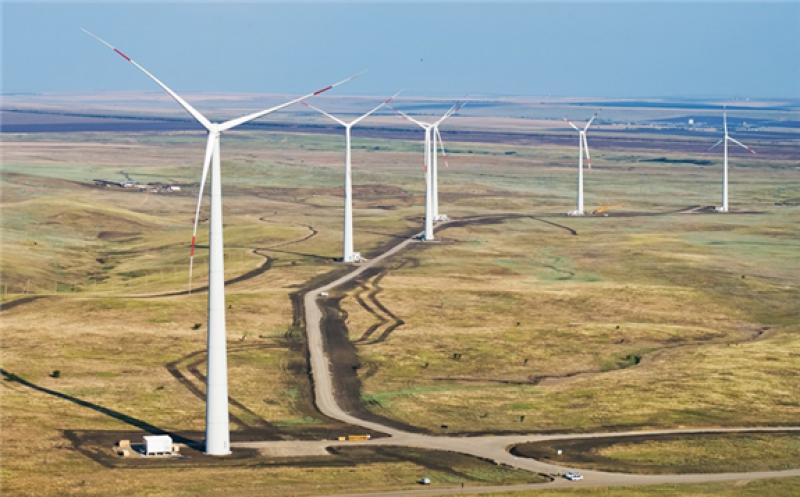
In total, the contract between Elemash Magnit LLC (an enterprise of TVEL Fuel Company of Rosatom in Elektrostal, Moscow region) and Red Wind B.V. (a joint venture of NovaWind JSC and the Dutch company Lagerwey) foresees manufacturing and supply over 200 sets of magnets. One set is designed to produce one power generator.
“The project includes gradual localization of magnets manufacturing in Russia, decreasing dependence on imports. We consider production of magnets as a promising sector for TVEL’s metallurgical business development. In this regard, our company does have the relevant research and technological expertise for creation of Russia’s first large-scale full cycle production of permanent rare-earth magnets,” commented Natalia Nikipelova, President of TVEL JSC.
“NovaWind, as the nuclear industry integrator for wind power projects, not only made-up an efficient supply chain, but also contributed to the development of inter-divisional cooperation and new expertise of Rosatom enterprises. TVEL has mastered a unique technology for the production of magnets for wind turbine generators. These technologies will be undoubtedly in demand in other areas as well,” noted Alexander Korchagin, Director General of NovaWind JSC.
For reference:
TVEL Fuel Company of Rosatom incorporates enterprises for the fabrication of nuclear fuel, conversion and enrichment of uranium, production of gas centrifuges, as well as research and design organizations. It is the only supplier of nuclear fuel for Russian nuclear power plants. TVEL Fuel Company of Rosatom provides nuclear fuel for 73 power reactors in 13 countries worldwide, research reactors in eight countries, as well as transport reactors of the Russian nuclear fleet. Every sixth power reactor in the world operates on fuel manufactured by TVEL. www.tvel.ru
NovaWind JSC is a division of Rosatom; its primary objective is to consolidate the State Corporation's efforts in advanced segments and technological platforms of the electric power sector. The company was founded in 2017. NovaWind consolidates all of the Rosatom’s wind energy assets – from design and construction to power engineering and operation of wind farms.
Overall, by 2023, enterprises operating under the management of NovaWind JSC, will install 1 GW of wind farms. http://novawind.ru
Elemash Magnit LLC is a subsidiary of Kovrov Mechanical Plant (an enterprise of the TVEL Fuel Company of Rosatom) and its main supplier of magnets for production of gas centrifuges. The company also produces magnets for other industries, in particular, for the automotive
industry. The production facilities of Elemash Magnit LLC are located in the city of Elektrostal, Moscow Region, at the site of Elemash Machine-Building Plant (a nuclear fuel fabrication facility of TVEL Fuel Company).
Rosatom is a global actor on the world’s nuclear technology market. Its leading edge stems from a number of competitive strengths, one of which is assets and competences at hand in all nuclear segments. Rosatom incorporates companies from all stages of the technological chain, such as uranium mining and enrichment, nuclear fuel fabrication, equipment manufacture and engineering, operation of nuclear power plants, and management of spent nuclear fuel and nuclear waste. Nowadays, Rosatom brings together about 350 enterprises and organizations with the workforce above 250 K. https://rosatom.ru/en/
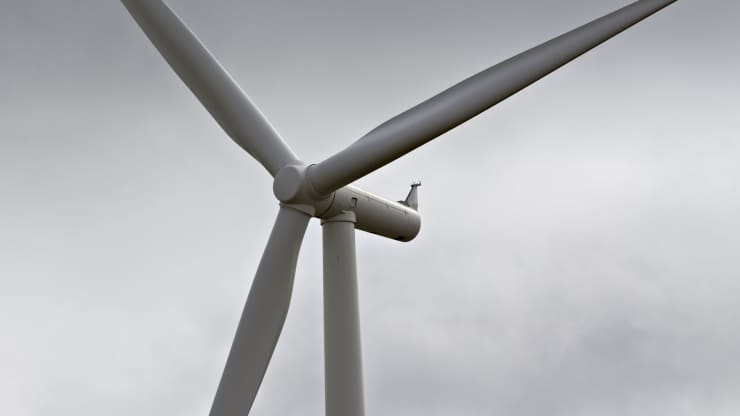
U.S. Added Less New Wind Power in 2021 Than the Previous Year — Here’s Why
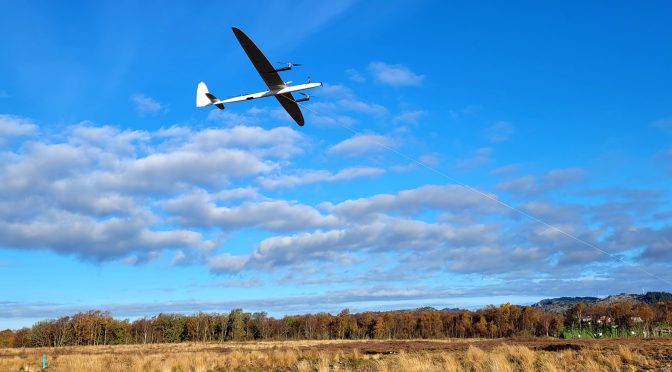
Airborne Wind Energy Developer Kitemill Prepares for 24HOUR Operation and Multi-Device Demonstrations
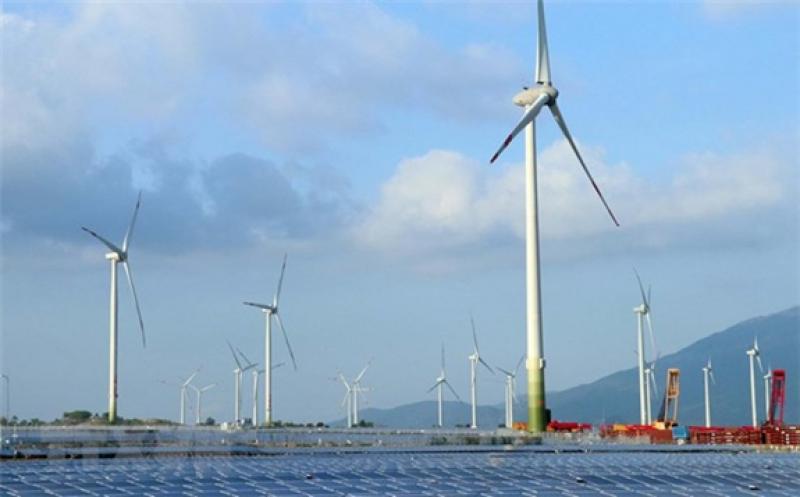
Vietnam's Largest Wind Power Plant Starts Operational

Vietnam Plans to Double Wind Power Generation by 2030
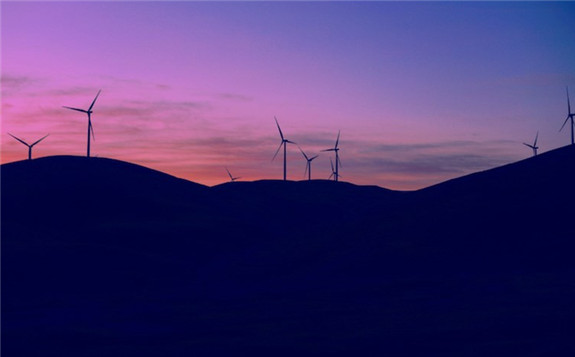
Developer Lines up Support for Vietnam Wind Build
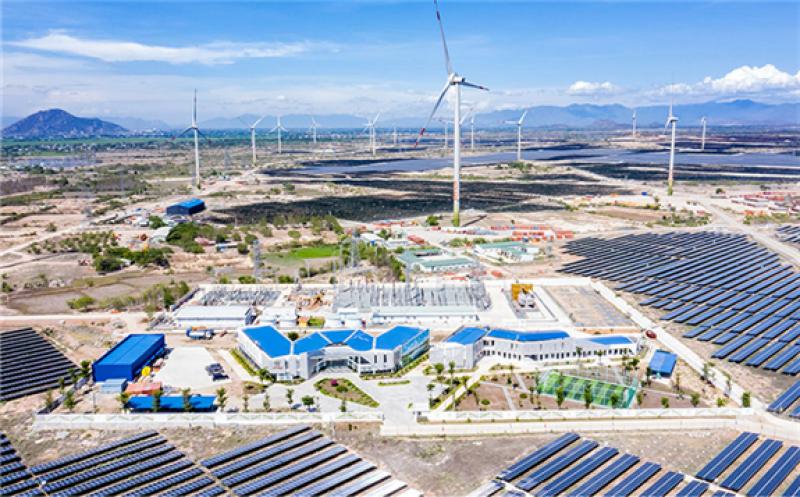
Trung Nam Group Inaugurates Wind Power Plant in Vietnam

IMAGES
COMMENTS
The first beauty reusable of its kind, The Original High Fiver™ is washable, reusable, game-changing. Simply fill, wash, rinse, repeat. Over and over. The Original High Fiver lets you skip the skincare minis, disposable travel size and tiny travel bottles and containers and keep those tiny plastics out of the landfill. Save Money.
Keep skincare organized and ready to go in your makeup bag with a washable refillable reusable travel all-in-one cosmetic container and smart beauty tool, Palette The Original High Fiver! Take all your skin care, cosmetics, beauty, makeup and personal care with you on the go. Add a washable and reusable makeup spatula from Spatty x Palette® and you have yourself a total skincare bff! Perfect ...
The Original High Fiver retails for $39. Palette Original High Fiver is a refillable travel-sized container for cosmetics and toiletries. It reduces single-use plastic waste.
Palette by pak is designed to be the ultimate reusable and customizable beauty tool for travel and beyond. The Original High Fiver consists of five attached .17 oz. containers with their own individual lids, making for a compact but easy-to-use, one-stop-shop for all of your favorite makeup and skincare powders, creams, oils, gels, liquids and ...
Travel Container for Beauty Products Customizable - Resealable . Leave your heavy containers at home and travel with tablette. ... foundation, lipstick, cream blush and eye shadow. These palettes breeze through airport security! Tablette Palettes were the best travel skin care/makeup option with a bonus of being eco friendly. I recommend these ...
The beauty industry is enormous; it's valued at more than $500 billion. And the travel-sized industry isn't a small part of that. Not only is it big business for beauty brands, but it also creates hundreds of millions of travel-sized plastic bottles and containers every year. In other words: it makes a lot of waste.
Use Refillable Travel Containers If you'd rather remain loyal to your beauty products (versus going with the unknown at a hotel), investing in leak-proof travel containers is a safe bet. There's nothing this one from Palette by Pak ($39) can't store—from liquids and oils to creams and even your face powder, this five-piece container lets you ...
Best Face Palette: NYX. Best Travel Eyeshadow Palette: LORAC. Best Travel Makeup Palette: Jane Iredale. Best Full Face Makeup Palette: Clinique. Best All in One Makeup Palette: Maybelline. Comparison Chart of Best Travel Palettes. How to Pack a Makeup Travel Kit. Get Travel Makeup Advice.
A palette travel container is an essential item for any frequent traveler who wants to keep their makeup, skincare products, and other cosmetic items organized and safe during their travels. When choosing the right palette travel container, make sure to consider factors such as size and capacity, material, and compartments and trays. ...
We've taken makeup organization to the next level with our Z Palette Travel Jars. Available in three sizes, Small, Small Deep, and Medium, these travel-friendly, 100% recyclable plastic containers are perfect to hold your liquid foundations, liquid concealers, loose powders and pigments, MAC paint pots, gel eyeliners, Anastasia Beverly Hills ...
It's time to live on the road, in the sky, and in far away places just like you do at home. Palette™️The Original High Fiver lets you use what you love and take your favorites without sacrifice. SHOP. With Palette by pak, you can have eco friendly and travel size beauty product containers for your overseas and at home adventures!
Julep Creme-to-Powder Eyeshadow Set. Julep Eyeshadow 101 Neutral Palette Creme-to-Powder 6 Piece Matte & Shimmer Eyeshadow Set. $70.00 $60.00. Buy Now. 03/08/2024 03:36 pm GMT. Leave your applicator brushes at home—with the Julep Eyeshadow Creme-to-Power Eyeshadow Stick, you won't need to pack them!
Fulmoon 4 Pcs Mini Empty Watercolor Tin 12 Wells Portable Metal Watercolor Palette Travel Watercolor Palette with Lid Small Tiny Mini Tin Box Paint Storage Container for Light Travel Painting. 5.0 out of 5 stars. 8. 50+ bought in past month. $9.99 $ 9. 99.
WANDIC Palette Box, 1 Pc 12-Well Empty Watercolour Box Airtight Paint Palette Container for Watercolor, Gouache, Acrylic and Oil Paint. 4.0 out of 5 stars 11. ... Leakproof Travel Palette Case for Watercolor, Acrylic Paints, Gouache and Oil Painting. 4.1 out of 5 stars 27. 50+ bought in past month. $13.99 $ 13. 99. Join Prime to buy this item ...
We've taken makeup organization to the next level with our Z Palette Travel Jars. Available in three sizes, Small, Small Deep, and Medium. These travel-friendly, 100% recyclable plastic containers are perfect to hold your liquid foundations, liquid concealers, loose powders and pigments, MAC paint pots, gel eyeliners, Anastasia Beverly Hills ...
40 Facts About Elektrostal. Elektrostal is a vibrant city located in the Moscow Oblast region of Russia. With a rich history, stunning architecture, and a thriving community, Elektrostal is a city that has much to offer. Whether you are a history buff, nature enthusiast, or simply curious about different cultures, Elektrostal is sure to ...
Elektrostal. Elektrostal ( Russian: Электроста́ль) is a city in Moscow Oblast, Russia. It is 58 kilometers (36 mi) east of Moscow. As of 2010, 155,196 people lived there.
Amazingly, the Portable Painter Micro is actually smaller than a credit card! Yet it transforms in seconds to become a complete, professional-quality watercolor palette. At just 1.5oz (43gm) and only 1" thick, it fits effortlessly in a pocket, purse or daypack, so it's perfect for travel both on or off-road; and has become a favorite ...
6. Novoslobodskaya Metro Station was built in 1952. It has 32 stained glass murals with brass borders. Novoslobodskaya metro station. 7. Kurskaya Metro Station was one of the first few to be built in Moscow in 1938. It has ceiling panels and artwork showing Soviet leadership, Soviet lifestyle and political power.
06 Nov 2020 by Rosatom. TVEL Fuel Company of Rosatom has started gradual localization of rare-earth magnets manufacturing for wind power plants generators. The first sets of magnets have been manufactured and shipped to the customer. In total, the contract between Elemash Magnit LLC (an enterprise of TVEL Fuel Company of Rosatom in Elektrostal ...